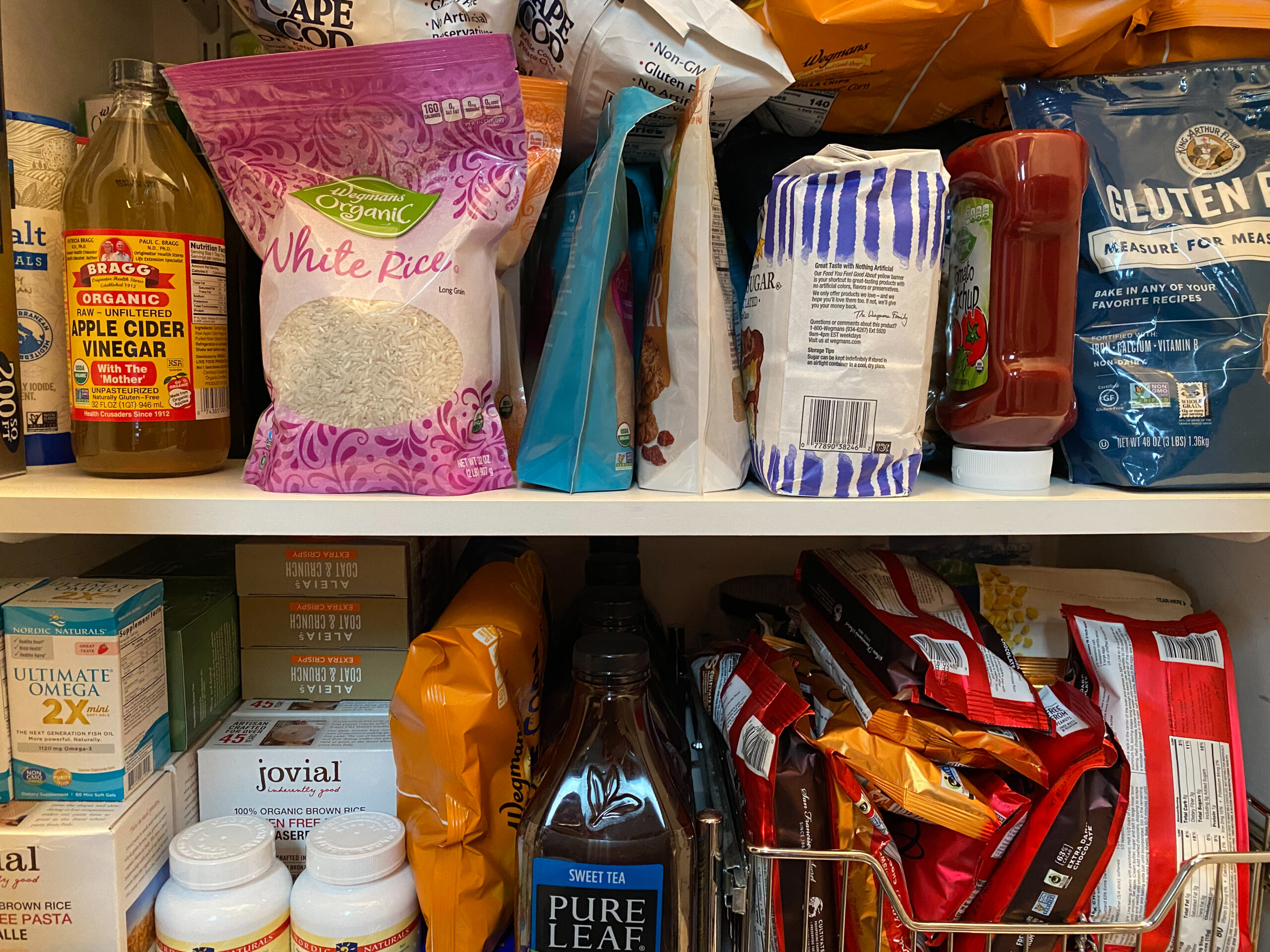By Madeleine Kates
Dinosaur sprinkles from a bake sale three years ago, canned beans from the start of COVID, or five partially used cinnamon shakers are just some of the strange items lurking in the back of the pantry. We all want an organized pantry, and no wants to waste food, but how long do many of these products remain safe to eat? First things first, start by clearing out items that have visibly passed their expiration dates, or are discolored, separated, or the wrong texture and smell, especially if they have been opened. Stocked items do no good collecting if they are going to waste or already expired, so this season, take a look and see what is hiding in your kitchen. Here are the recommended shelf-lives for common household pantry items:
Dry goods: Sugar, salt, instant coffee, dry white rice, or cornstarch are items that keep without a specified use-by date if stored properly. Grains that include dried pasta, oats, or quinoa, last best if used within two years, while breadcrumbs have a shorter shelf-life and should be used within six months before being replaced. Flours of different types have shelf-lives depending upon the ground ingredient, but are able to be stored without expiration if kept in the freezer. Cake mixes will vary with each brand and flavoring because the ingredient combinations are different for each type.
Spices and Oils: Packaged correctly in an air-tight container, spices are best if used within two years, while oils will spoil more quickly. Oils vary on their expiration, so it is best to check the date, and give them a smell before use. Many unopened sauces, including jam, mustard, ketchup, BBQ sauce, and salsa, can be stored in the pantry for one year.
Miscellaneous: Vanilla and honey are items that can be stored indefinitely, but it is always a good idea to check the shelf-life on sprinkles, as they do contain sugars and sometimes oils. If you have not replaced food dye in a while, take a look at the ingredients and see if natural-ingredient food dyes may meet your needs and be a healthier option. And, while it is great to have a storage of bottled water, especially with the winter months approaching, make sure you try to use and rotate the stash, as it keeps fresh for two years.
Instead of starting with a recipe, start with your ingredients. See if you can make a meal with items on hand! If you search your ingredients, you may be surprised at the creative variety of recipes you will find. Some great go-to ideas are soups or curries, which involve many of the common pantry staples, including canned goods and spices.
As with any item, always check the individual expiration date, but get creative and see what great finds are already hiding in your pantry! For more information about pantry storage visit https://tinyurl.com/2p92jy6m.
Madeleine Kates is a Senior at Niagara University studying Life Sciences, Psychology, and Environmental Science.












